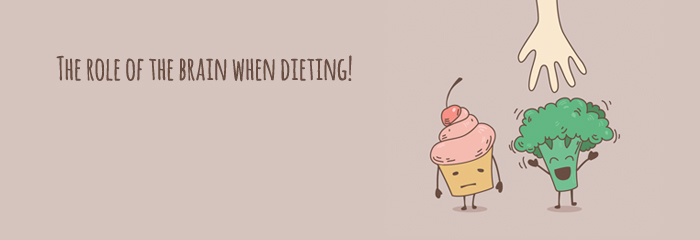The Problem with Diets ~ It’s the Brain!

Research on mice has revealed one of the reasons why restricting calorie intake is not the best way to lose weight. As mice share some important physiological mechanisms with humans they are a useful animal for studying how our bodies work.
Calorie Saving
The body cleverly takes into account the number of calories eaten when freeing up calories to be burned. Eating less means the body adjusts and compensates by burning fewer calories. This means that fat is preserved rather than being broken down for energy.
The research on mice found that this is due to a group of neurons in the hypothalamus that coordinate appetite and energy expenditure. These neurons control how many calories are burned and how many are saved depending on what is coming into the body. When activated these brain cells make us hungry and drive the impulse to eat, but when inhibited this mechanism can lead to almost complete anorexia. When there is no food availabile the neurons acts to save energy by limiting the number of calories burned thus preventing weight loss. When we start eating again the neurons restore energy expenditure back to normal (1).
Survival vs Dieting
This mechanism evolved to allow human beings to survive periods of famine and without it we may not have survived as a species. However, in the UK calorie restriction is usually a deliberate choice in order to lose weight rather than lack of availability of food. This research helps to explain why so many people find that dieting leads to an initial loss of weight followed by a plateau. Our bodies compensate for the reduction in calories by burning fewer calories and slowing down the metabolism.
If Diets Don’t Work, What Does?
It’s no surprise that our old friend exercise is highly recommended. An ideal exercise programme would include:
- Cardiovascular exercise – that gets the heart rate up and the blood flowing. Try brisk walking, running, cycling, dancing, aerobic exercise classes.
- Muscle building – muscle burns more calories, even at rest, than fat. Weight training or body weight exercises such as press ups, planks, squats and lunges all help to build muscle.
- Flexbility – it’s important to maintain a good range of motion of all the body parts. Try yoga, tai chi, stretching, pilates.
- Balance – good balance helps to reduce falling which is important as we get older. Good balance relies on core strength so core exercises, such as planks, are important. Yoga and tai chi are also both good for balance.
In addition to regular exercise it’s important to give the body the message that food is plentiful. This means adjusting what you eat rather than the amount. Eat plenty of nutrient dense, fibre rich foods and avoid empty calories from sugar and processed foods. It’s important to refuel after exercise so that the calories taken in can be used to repair the muscles and restock depleted glycogen reserves.
Reference
- 1. Burke LK et al. MTORCI in AGRP neurons integrates exteroceptive and interoceptive food-related cues in the modulation of adaptive energy expenditure in mice, eLife; 23 May 2017